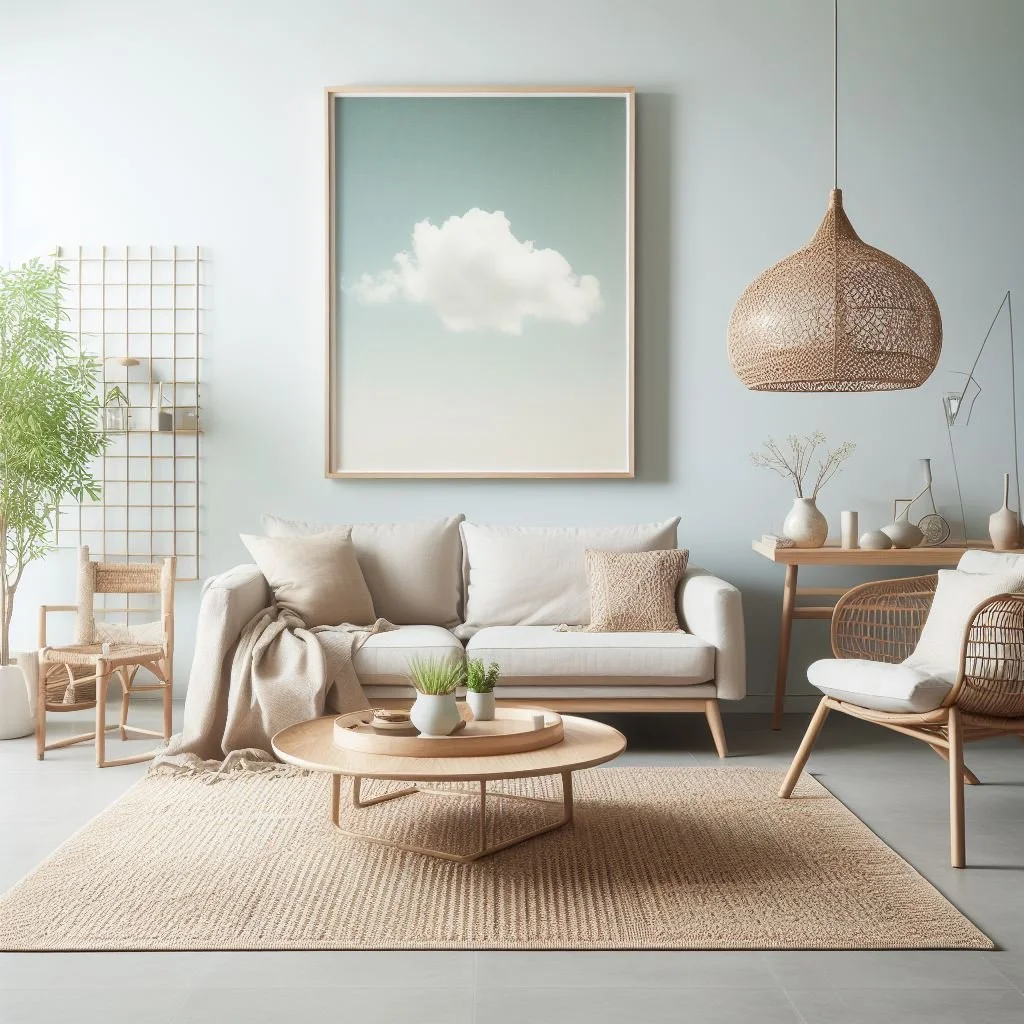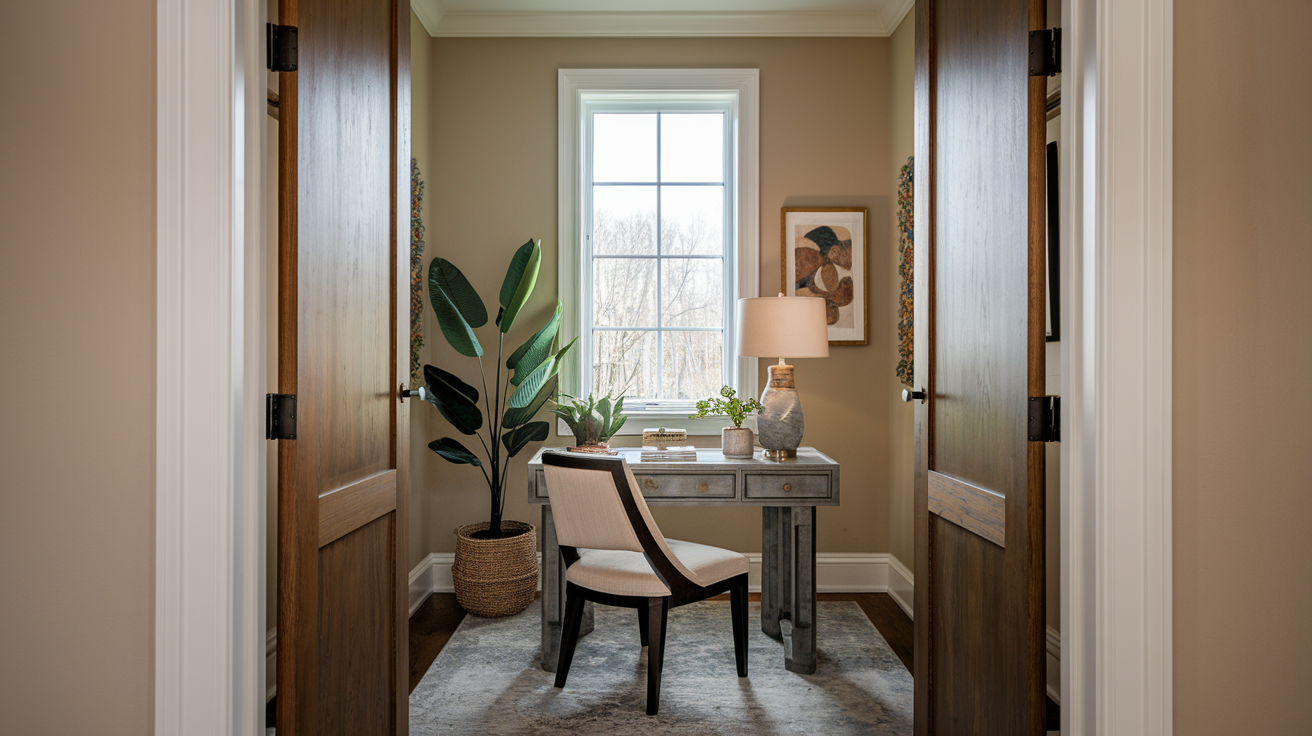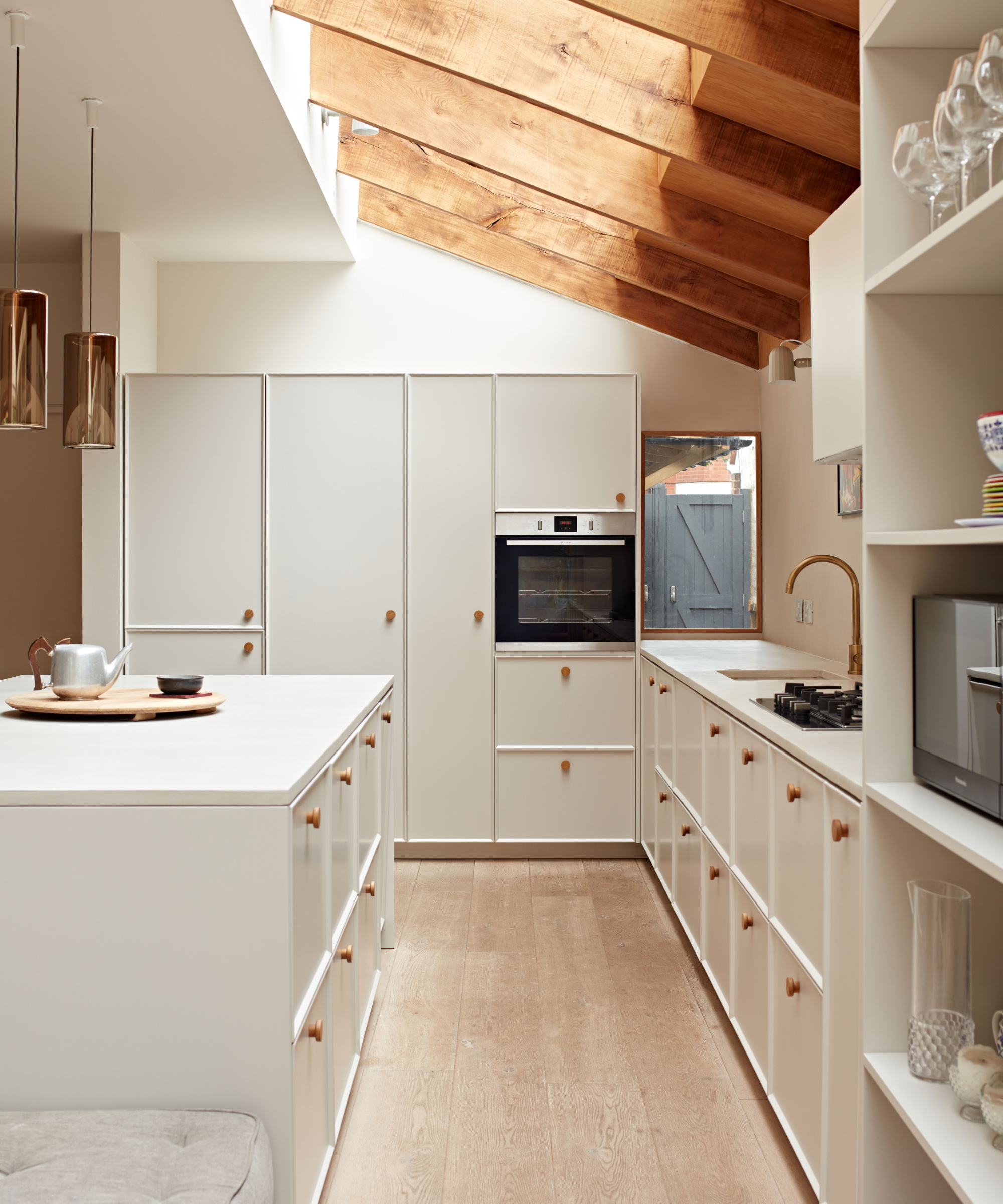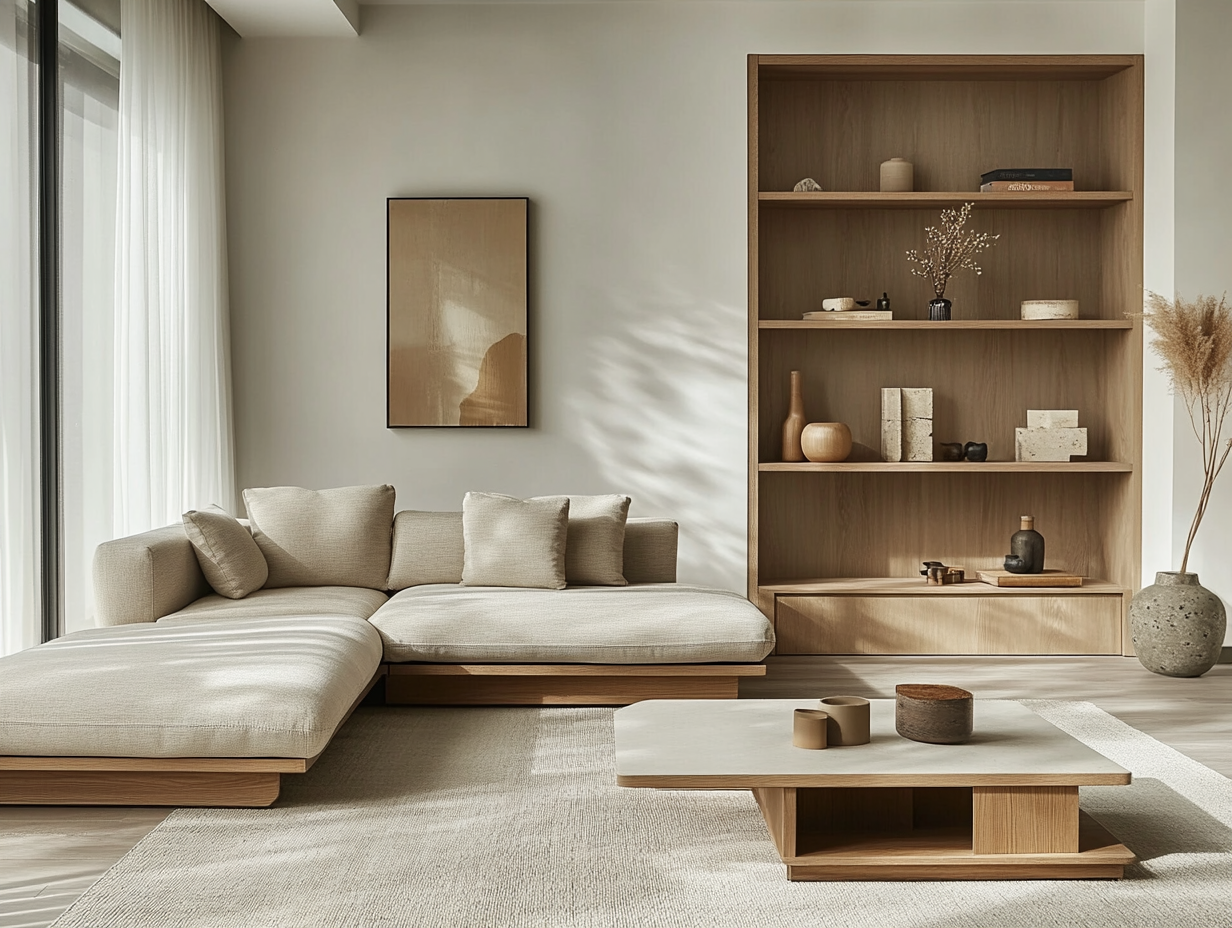The relationship between minimalism and well-being: how simple interior design can improve mental health

The Intersection of Simplicity and Psychological Well-being
In an increasingly chaotic world, where the pace of life often feels overwhelmingly fast, many individuals are seeking pathways to mental clarity. One compelling answer lies in embracing minimalism—a lifestyle that advocates for simplicity and intentional living by focusing on essentials and eliminating distractions. As a result, a simpler interior design has emerged as not just aesthetically pleasing but also a potent tool for enhancing overall well-being.
Research indicates that cluttered environments can be detrimental to mental health, driving feelings of stress and anxiety. For instance, a study published in the journal Psychological Science found that individuals in cluttered spaces can experience difficulties concentrating and may feel overwhelmed. Conversely, adopting a minimalist approach can foster an atmosphere of peace and order, significantly contributing to emotional balance. Consider how the simplicity of a clean desk or an unfurnished room can promote focus and creativity, allowing one to channel their energy into productive tasks rather than being sidetracked by visual noise.
Some of the notable benefits of minimalist design include:
- Enhanced focus and productivity: With fewer distractions around, the mind can engage more fully with the task at hand. For example, some companies have adopted open-plan minimalist designs to maximize employee efficiency.
- Reduced feelings of stress and overwhelm: By curtailing excess, spaces become more manageable and comforting. Many individuals report feeling a sense of relief when their surroundings are orderly, freeing them to engage in self-care activities.
- Improved emotional health: Minimalism promotes tranquility by enabling a space that encourages mindfulness. Simple decor—a few well-placed plants or art pieces—can evoke joy and serenity without overwhelming the senses.
As more individuals search for sanctuary from the relentless noise of modern life, the principles of minimalism resonate on a profound level. The conscious effort to simplify one’s surroundings can lead to a more harmonious environment that nurtures mental wellness. Those looking to embrace this lifestyle need not undergo a radical transformation overnight. Small adjustments, such as decluttering a single room or reducing digital distractions, can yield significant improvements in how one feels and functions daily.
This exploration of minimalism reveals a clear connection between our physical surroundings and mental health. By strategically pursuing simple interior design choices, it is indeed possible to pave the way for a healthier mind and a more fulfilling life. As society becomes more aware of these connections, the journey towards minimalism may become not just a trend, but a sustainable approach to living that prioritizes psychological well-being.

DISCOVER: Click here to transform your space
Understanding Minimalism and Its Impacts on Mental Health
The practice of minimalism, rooted in the idea that less is more, extends far beyond a mere aesthetic choice—it encapsulates a lifestyle shift that seeks to enhance overall well-being. In its core essence, minimalism encourages individuals to prioritize what truly matters, freeing oneself from the burdens of excess and distraction. This intentional approach to living directly reflects in the spaces we inhabit, suggesting that our environments play a pivotal role in shaping our mental health.
Diving deeper into the psychology behind minimalism, studies reveal that interactions with cluttered spaces can trigger stress responses in the brain. An influential study published in the Journal of Environmental Psychology demonstrated that clutter not only negatively impacts mood but also significantly affects cognitive function. Participants exposed to chaotic surroundings exhibited increased anxiety levels, experiencing a heightened difficulty in processing tasks and making decisions. In sharp contrast, environments characterized by minimal design have been shown to promote a sense of calm and clarity.
Key aspects of minimalist interior design that foster psychological well-being include:
- Clarity of Space: Minimalism emphasizes the importance of open spaces, which can enhance feelings of freedom and creativity. A well-organized room with clear sight lines can instantly boost mood and optimism.
- Enhanced Breathing Room: Reduction of furnishings and decorative elements helps to create a spacious atmosphere, promoting relaxation. Homeowners often report that their stress levels decrease in areas where excess has been minimized.
- Intentional Design Choices: Minimalism advocates for thoughtful selection of home décor. Choosing fewer items of significant value rather than numerous trivial ones fosters a deeper appreciation for each piece, cultivating joy and satisfaction.
Moreover, the principles of minimalism can extend beyond physical spaces to influence digital environments. In an age overwhelmed by information, dismissing digital clutter—such as unnecessary notifications and social media overload—similarly enhances well-being. Individuals are increasingly discovering that creating a clear and focused digital workspace can lead to improved concentration and a greater sense of control over their lives.
As society becomes more aware of these benefits, embracing minimalism may serve as a powerful antidote to the stresses of contemporary living. The shift towards maintaining a simple interior design need not be abrupt; instead, gradual changes—like decluttering a single drawer or implementing a more straightforward décor scheme—can lay the groundwork for long-term improvement in mental health and emotional resilience.
This aligns with a broader movement toward mindfulness, where every item we surround ourselves with is viewed as a reflection of our values and priorities. Through this understanding, it becomes evident that adopting minimalism not only transforms our physical spaces but also our mental landscapes, leading to a harmonious balance that nurtures overall well-being.
The Connection Between Minimalism and Mental Health
In today’s fast-paced world, where clutter and chaos seem to dominate our environments, the concept of minimalism has emerged as a beacon of tranquility. The relationship between minimalism and well-being is increasingly gaining traction, reflecting a deeper understanding of how our surroundings influence our mental health. Simple interior design, characterized by clean lines and uncluttered spaces, can significantly enhance our emotional state.Research has shown that overly crowded spaces can lead to increased feelings of stress and anxiety. In contrast, minimalism promotes a sense of order and calm, allowing individuals to focus better on their tasks and feel more at ease in their environments. A clean and simple interior allows homeowners to breathe easier, both literally and figuratively, reducing feelings of overwhelm.Moreover, minimalism encourages individuals to thoughtfully curate their possessions, leading to meaningful connections with the items they choose to keep. This intentionality not only eliminates distractions but also fosters a sense of contentment and appreciation for one’s surroundings. By focusing on quality rather than quantity, people can create spaces that reflect their personal values and aesthetic preferences, further enhancing their mental health.In addition, the simplicity of minimalist design is often linked to improved productivity. A streamlined environment can help reduce decision fatigue, enabling the mind to allocate more energy towards creative problem-solving and other important tasks. As a result, incorporating minimalism into interior design can lead to profound changes in mood and overall mental wellness.Let’s explore some of the key advantages of minimalist design in an informative table to better understand its impact on mental health:
| Advantages of Minimalism | How It Enhances Well-being |
|---|---|
| Reduced Clutter | Promotes focus and diminishes feelings of anxiety. |
| Increased Clarity | Encourages mindfulness and intentional decisions. |
Exploring these dimensions of minimalism underscores its potential to transform spaces and lives, creating an oasis of peace amid the chaos of modern living. As more individuals embrace minimalist principles, the ripple effects on mental health and overall well-being continue to unfold, highlighting a crucial tie between our environment and our state of mind.
DIVE DEEPER: Click here to discover the benefits of a digital detox
The Connection Between Minimalist Environments and Emotional Resilience
As the modern world continues to accelerate at a breakneck pace, the importance of fostering emotional resilience becomes paramount. One compelling aspect of achieving this resilience is through minimalist interior design. In homes where simplicity reigns, individuals often report feeling less overwhelmed and more in control of their surroundings. This directly ties into the principles of behavioral psychology, which suggest that our environment can greatly influence our behavior and emotions.
Interestingly, research has shown that minimalistic environments can trigger positive emotional responses. A study published in The International Journal of Psychology found that participants living in minimalist-designed spaces showed measurable increases in happiness and life satisfaction compared to those in cluttered environments. The clarity provided by a simple design allows individuals to focus their energies on personal growth and meaningful connections with others, rather than the chaos that comes with excess.
Fostering Mindfulness Through Design
Another significant benefit of minimalism is its role in promoting mindfulness—a state of active, open attention to the present. Minimalist spaces can effectively enhance this practice. By reducing the number of distractions in our environments, we pave the way to cultivate a more mindful lifestyle. Mindful living signifies being aware of our surroundings, thoughts, and feelings without judgment, empowering us to experience life fully.
- Increased Focus: A decluttered space reduces visual distractions, allowing individuals to concentrate better on tasks at hand. Research indicates that less clutter leads to higher productivity levels and better decision-making capabilities.
- Mindful Decor Choices: The act of choosing fewer, more intentionally selected items encourages individuals to reflect on their preferences and values, enhancing their sense of identity and emotional stability.
- Creating Zones: Minimalist design often involves setting aside specific areas for specific activities, such as reading or meditation. These designated zones promote a sense of purpose and routine, which can also reduce stress.
Moreover, it is noteworthy to mention the compelling relationship between nature and minimalism. Biophilic design—a concept that seeks to integrate nature into our living spaces—aligns seamlessly with minimalist principles. Natural light, plants, and open views not only conform to the minimal aesthetic but also enhance well-being. A report from the American Psychological Association highlighted that natural elements can reduce levels of stress and foster a sense of tranquility, proving that a minimalist approach can, indeed, support mental health.
Practical Implementation of Minimalism in American Homes
For individuals looking to adopt a minimalist mindset, it’s critical to begin with practical steps. Many Americans may face challenges, especially when societal norms often promote accumulation as a sign of success. However, even small changes can yield significant mental health benefits. Here are a few suggestions:
- Start Small: Tackle one area at a time, such as a single shelf or a room, gradually working your way towards a more minimal home.
- Digitally Detox: Apply minimalism to digital devices. Regularly declutter your digital workspace—removing apps that overwhelm you or deleting unnecessary files—to create a better online atmosphere.
- Evaluate Purchases: Before acquiring new items, consider their practical use and emotional significance. Adopt a one-in-one-out policy to maintain balance.
The journey into minimalism does not demand upheaval; instead, it invites a process of introspection and careful curation of one’s environment. When one simplifies the external world, it opens up avenues for a profound internal transformation, resulting in improved overall well-being and healthier mental health outcomes.
DISCOVER MORE: Click here to elevate your daily routine
Conclusion: Embracing Minimalism for Enhanced Mental Health
In our fast-paced and often chaotic world, embracing minimalism presents a powerful remedy for improving mental health and overall well-being. The relationship between a decluttered environment and emotional resilience cannot be understated. As research highlights, minimalistic interior design fosters a sense of control, reduces stress, and cultivates a space where mindfulness can flourish.
By prioritizing simplicity, individuals can create environments that not only reduce distractions but also promote focus and clarity. The intentional choices made in selecting decor and organizing spaces enhance personal identity while providing a calming atmosphere conducive to reflection and growth. Zone creation within a minimalist layout further strengthens routines, allowing one to engage more fully in daily activities—be it reading, meditating, or simply unwinding.
Moreover, integrating nature into minimalist designs can amplify these benefits, providing physical and psychological advantages that support a tranquil mindset. The increasing recognition of this dynamic connection emphasizes a broader cultural shift toward valuing emotional well-being as an integral part of the human experience.
As you consider the impact that your surroundings have on your mental state, remember that adopting a minimalist approach does not necessitate drastic changes. Simple, gradual adjustments can lead to meaningful transformations. So, embark on your journey towards minimalism, not only to declutter your physical space but also to invigorate your mind and spirit. Explore this path diligently and discover how a simple, well-designed environment can profoundly enrich your quality of life.


